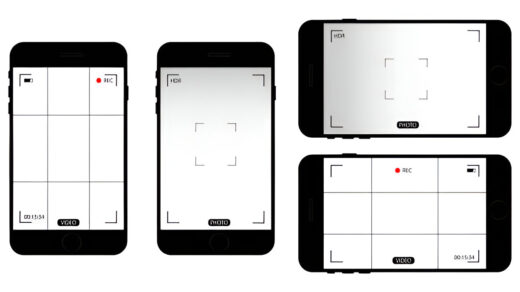Have you ever thought about how many wheels are in the world? It’s a question that might sound simple at first but quickly spirals into a fascinating topic when you dig deeper. From the wheels on vehicles to the tiny wheels on toys and even the castors on office chairs, the world is full of wheels, and estimating their total number is an intriguing, mind-boggling exercise.
In this article, we’ll explore different categories of wheels, how they’re used across various industries, and try to wrap our heads around just how many wheels are out there.
The Basic: Vehicles on the Road
The most obvious source of wheels in the world is vehicles. Cars, trucks, motorcycles, and buses – all depend on wheels to move. According to an estimate, there are about 1.5 billion cars in whole world. Since most cars have four wheels, that alone accounts for around 6 billion wheels. However, not every vehicle has four wheels. In developing countries, there are three-wheeled or two-wheeled vehicles (like motorcycles).
Motorcycles alone, with more than 200 million units globally, add another 400 million wheels to the global total. There are also commercial trucks, which often have more than four wheels, adding to the tally.
And let’s not forget bicycles. With an estimated 1 billion bicycles worldwide, these add another 2 billion wheels to the total count. So, if we tally up the numbers for just cars, motorcycles, and bicycles, we’re already at approximately 9 billion wheels just from these vehicles alone.
Wheels in Aviation: Aircraft
Wheels aren’t only found on the ground; they’re also in the air. Most aircraft use wheels to taxi, take off, and land. Planes like commercial airliners, military jets, and private aircraft all have wheels, ranging from a few per plane to many for large commercial aircraft. Each plane can have anywhere from 3 to 20 wheels, depending on its size and purpose.
While the number of airplanes globally is far smaller compared to road vehicles (approximately 25,000 commercial aircraft), their large wheels and the necessity for durability and frequent replacement make them a significant factor in the total count.
The Hidden Wheels: Industrial Machinery and Equipment
Vehicles and aircraft might be the first things that come to mind when you think of wheels, but there are many other sectors that depend on them. Take industrial machinery, for example. Factories, construction sites, and warehouses use machinery with wheels or wheel-like mechanisms for transportation and operation. From forklifts to conveyor belts, these industrial settings are packed with wheels of all sizes.
Add to that the wheels found in agricultural equipment like tractors and harvesters. Each of these vehicles often has multiple wheels – sometimes large, sturdy tires – used for traversing rough terrain. Though not as numerous as passenger vehicles, their size and use in vital industries are worth noting.
Wheels at Home: Furniture, Toys, and Everyday Objects
We often overlook the small, everyday wheels that populate our homes. Think about the office chair you’re sitting on – it probably has at least five castor wheels. And that’s just one chair. Now multiply that by the number of office chairs worldwide and add in the number of wheels found on desks, kitchen carts, and other furniture. It’s estimated that there are more than 10 billion castors in the world, mostly found in furniture.
But it doesn’t stop at furniture. Toys, especially those for young children, are full of wheels. Toy cars, trucks, and trains are some of the most popular playthings worldwide, and they often have four or more wheels each. Large toy manufacturers produce millions of these small vehicles annually. If we consider every home in the world with at least a few toy vehicles, it becomes clear that wheels aren’t just large, they can be tiny too, and they are everywhere.
Castors: The Unsung Heroes of Wheels
Perhaps the most overlooked type of wheel is the castor, a small wheel found under furniture, medical equipment, shopping carts, and more. These wheels are designed to help things move smoothly across surfaces, and while they may not be flashy, they are crucial to the smooth operation of everyday objects.
The global number of castors is staggering. It is estimated that there are over 10 billion castors in use worldwide, especially in industries like furniture and medical supplies.
Toy Wheels: A Massive Contributor
While we usually think of wheels on vehicles, toys make up a surprisingly large portion of the total number of wheels in the world. Popular toys like Hot Wheels, Matchbox cars, and LEGO vehicles often feature two or more wheels each. Mattel, the maker of Hot Wheels, has produced over 6 billion Hot Wheels cars since the brand’s inception. That’s more than 24 billion wheels just from one toy brand! When you include all the other toy manufacturers around the world, the number of wheels on toys alone could easily be in the tens of billions.
The Total Estimate: How Many Wheels Are Really Out There?
Given all these categories, it’s hard to arrive at an exact number of how many wheels exist globally, but we can make an educated estimate. Here’s a rough breakdown:
Cars and other vehicles: ~9 billion wheels
Bicycles: ~2 billion wheels
Industrial equipment: Several billion wheels
Castor wheels (furniture, shopping carts, etc.): Over 10 billion wheels
Toys (e.g., Hot Wheels, LEGO): Tens of billions of wheels
When we add it all up, the total estimate for the number of wheels in the world easily exceeds 93 billion wheels.
Conclusion: Wheels Are Everywhere
Wheels are essential to our daily lives, whether we realize it or not. From the wheels on our cars to the small castors on our chairs and toys, the sheer number of wheels in the world is enormous. What started as a simple invention thousands of years ago has become a fundamental part of modern civilization. So the next time you hop in your car or push your office chair across the floor, take a moment to appreciate the humble yet powerful wheel that keeps the world turning.
Frequently Asked Questions Related to Wheels in the World
1. How many wheels are there in the world?
It is estimated that there are approximately 93 billion wheels in the world. This number includes vehicle wheels, industrial machinery, castor wheels, and toy wheels.
2. How many wheels are on cars globally?
There are over 1.4 billion cars in the world, and most of these have four wheels, leading to a total of about 5.6 billion wheels from cars alone.
3. Are there more wheels or doors in the world?
This is a hotly debated question. Some argue that cars have an equal number of wheels and doors, while others note that toys, machinery, and castors significantly increase the number of wheels worldwide. No definitive answer exists, but the number of wheels is likely higher due to their varied applications.
4. What are castor wheels and how many are there?
Castor wheels are small wheels found on objects like office chairs, furniture, and carts. It is estimated that there are over 10 billion castor wheels in use globally.
5. Do toy wheels make a significant contribution to the total count?
Yes, toy wheels, particularly from brands like Hot Wheels and LEGO, add billions of wheels to the global total. Mattel alone has produced over 24 billion wheels just from its Hot Wheels line.


